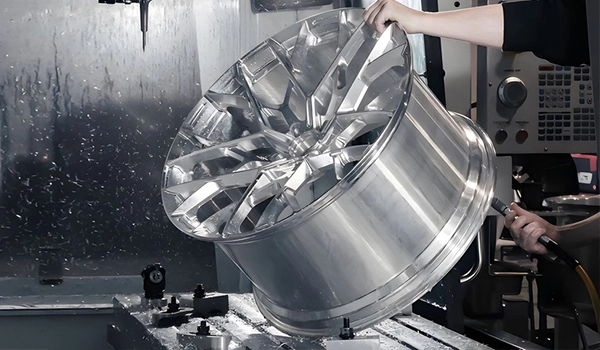Deformation in aluminum alloy processing is one of the common challenges in production, especially in the manufacture of complex parts and thin-walled structures. In order to solve the deformation caused by aluminum alloy processing, the following countermeasures can be referred to:

1. Choose the right aluminum alloy material
The mechanical properties, thermal conductivity and machinability of different aluminum alloys are different, so selecting the appropriate material is very critical. For example, 6061 and 6082 belong to the 6xxx series of aluminum alloys, which have good machinability and moderate strength, and generate less cutting force and heat during processing, thus helping to reduce deformation. In contrast, 7xxx series aluminum alloys such as 7075, despite their high strength, are poor in processability and more prone to deformation. Therefore, before the design and processing, the selection of materials should fully consider the dimensional accuracy requirements, surface finish and mechanical properties of the parts.
2. Optimize cutting parameters
Aluminum alloy is easily deformed by cutting force and cutting heat during machining. By optimizing the cutting parameters, such as reducing the cutting speed, appropriately increasing the feed rate and reducing the cutting depth, the cutting force can be effectively reduced, thereby reducing the risk of deformation. At the same time, the right tool path and tool, such as the use of climb milling technology and high-performance tool coatings (such as titanium nitride coatings), can help reduce tool wear, improve chip removal performance and reduce cutting temperatures.
3. Control cutting temperature
Due to the high thermal conductivity of aluminum, a large amount of cutting heat will be generated during processing, resulting in thermal expansion of the workpiece and causing deformation. In order to mitigate this problem, the use of sufficient cutting fluid or cooling system is necessary. Common cooling methods include flood cooling and tool internal cooling systems, which can effectively reduce cutting temperatures, extend tool life and keep parts dimensional stable. In addition, proper adjustment of cutting parameters also helps to control the cutting temperature and prevent deformation due to thermal expansion.
4. Reasonable workpiece clamping
The clamping method of the workpiece has an important influence on the machining deformation, especially for thin-walled parts or long parts. The use of automatic centering three-jaw chuck or custom fixture can avoid deformation problems caused by uneven clamping force. For thin-walled parts, soft claws or custom clamps distribute the clamping force evenly, thus avoiding deformation during machining. In addition, the use of multi-point clamping or vacuum suction cups can also reduce the impact of clamping force on the workpiece.
5. Step-by-step processing strategy
In order to reduce the stress concentration and deformation risk in machining, the multi-step machining strategy combining roughing and finishing is usually adopted. When roughing, leave an appropriate margin (usually 0.1-0.2mm) in order to better control the final size when finishing. By gradually removing the material in a step-by-step manner, the risk of deformation of the part during processing can be reduced.
6. Post-treatment to eliminate stress
In some cases, after the aluminum alloy processing is completed, there may be a large residual stress inside the workpiece, resulting in post-processing deformation. To solve this problem, stress relief methods such as heat treatment, vibration aging or shot peening can be used. Heat treatment can remove stress by annealing or age hardening, while vibration aging and shot peening can improve the dimensional stability and fatigue resistance of the workpiece by introducing surface compressive stress.
By combining the above measures, from material selection, processing parameter optimization to workpiece clamping and post-processing, aluminum alloy processing deformation can be effectively controlled to ensure the dimensional accuracy and quality stability of parts. These methods have been successfully applied in practical production, especially in the occasions requiring high precision and mass production.